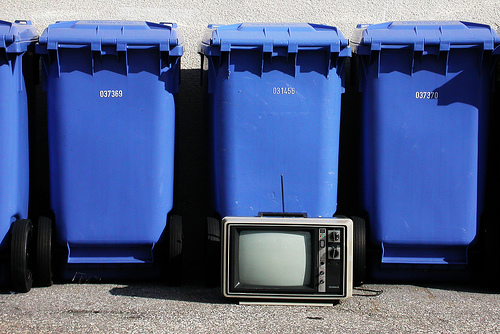 According to Nielsen, televisions are on the decline. Not that TV viewing itself is: A new report shows that while people are beginning to ditch their box sets, “consumers are viewing more video content across all platforms.”
According to Nielsen, televisions are on the decline. Not that TV viewing itself is: A new report shows that while people are beginning to ditch their box sets, “consumers are viewing more video content across all platforms.”
When it comes to technology, every device and gadget out there, no matter how established or popular, will get replaced. But television sets have had an incredible amount of staying power, despite various new mediums that challenge them. Apparently there is no exception to the rule and while TVs arguably have (or had?) more staying power than now-obsolete tech staples (think landline phones, DVD/VCR combos, or CD players), it’s becoming apparent that younger generations aren’t committed to them.
Nielsen estimated there are 114.7 million households with TVs, down from 115.9 million last year. Just to rephrase, last year 98.9-percent of homes had TVs, and this year it is forecast to be around 96.7-percent. If you’re thinking that’s still an enormous amount of TVs, you’re right – except that there hasn’t been a decline in TV ownership since 1992. But before you regard this as a sign of the apocalypse, take into account what the numbers mean: Nielsen is only considering TVs that can receive at least one channel, which eliminates any cord cutters out there opting to entirely rely on streaming services hooked up to their TV sets. And the study points out a few contributing factors, such as the fact that the economy has made many cross television off their list of needs, especially in rural areas.
TV ownership has never bounced back after the shift from analog to digital, and the increase in platforms for viewing TV content has decreased the need for TV subscriptions, and in some cases, the need for a TV altogether. “A small subset of younger, urban consumers are going without paid TV subscriptions. Long-term effects of this are unclear, as it’s undetermined if this is also an economic issue, with these individuals entering the TV marketplace once they have the means, or [if it means] a larger shift to viewing online and on mobile devices.”
It’s obviously a little early to count TV out for good, and it’s possible that the proliferation of smart TVs and improved digital content will only reshape the market instead of kill it. If anything, it seems like cable providers should be the ones worrying.
Editors' Recommendations
- How much is Apple TV+?
- Walmart just dropped the price of this 75-inch LG 4K TV under $600
- Yes, YouTube TV is kind of broken tonight
- What is Google TV? Here’s everything you need to know
- Let’s discuss an Apple TV 4K with a camera

